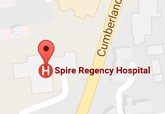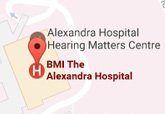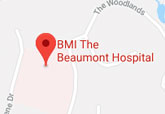Posterior Cervical Laminectomy
Various spinal conditions, namely, degenerative disc disease, herniated disc, spinal stenosis and spondylosis can cause compression of the spinal cord and spinal nerves in the neck (cervical region) resulting in neck and arm pain. These conditions may also lead to numbness and weakness in the arms. This pain and other associated symptoms can be relieved by removing the lamina, the bony plate forming the roof of the spinal canal, by a surgical procedure called laminectomy. The procedure is performed through an incision over the back (posterior side) of the neck and is also called as posterior cervical laminectomy. Posterior cervical laminectomy may be coupled with discectomy. Discectomy involves a partial or complete removal of the herniated disc responsible for nerve and spinal cord compression.
The removal of the lamina and discectomy decompresses the spinal cord and the nerves but it can also destabilize the spine. Thus, a spinal fusion is performed, after laminectomy, to stabilize the spine. Spinal fusion is a surgical procedure that involves union of the adjoining vertebrae, after discectomy, by inserting a bone graft into the empty disc space. After the surgery, the bone graft heals and fuses the vertebrae together into one solid bone. The bone graft may be derived from a bone of the patient (autograft) or from a donor bone (allograft). Spinal instrumentation that employs pedicle screws, plates and rods may also be used to eliminate any movement between the vertebrae, during the healing process.
What steps are to be followed prior to the surgery?
Before the surgery, the patient’s medical history and various diagnostic tests, such as X-rays and other imaging tests are used to ascertain the underlying spinal conditions causing the pain and other associated symptoms. The current health status of the patient is also evaluated through blood tests and other specialized tests, for diseases such as diabetes and heart disease. Based on the medical condition of the patient, your surgeon will decide on the nature of approach for the surgery.
The surgeon also explains the surgery and its benefits along with the possible risks to the patient. A general health clearance is obtained from the general practitioner, for the surgery.
How is the procedure performed?
The patient is administered general anaesthesia and placed face down on the operating table. Guided by the real time images from the intra-operative fluoroscopy, an incision is made over the back of the neck, at the level of compression. The muscles and the soft tissues are retracted (minimally invasive approach) to expose the lamina. The lamina is then cut and removed. The spinous process of the spine may also be trimmed or removed. This exposes the spinal cord and spinal nerves at that level. The disc, bone spurs, thickened and buckled ligaments and other soft tissue compressing the nerves and the spinal cord are also carefully removed. The cervical spine is stabilized by inserting the bone graft into the empty disc space. Instrumentation may be used to stabilize the spine immediately, till the fusion occurs through bone healing. The muscles and the soft tissue are then repositioned and the incision is closed.
After the surgery
After the surgery, the vital signs of the patient are closely monitored and special care is taken, by the nurses and medical staff, to manage the post-operative pain. Some discomfort around the incision and occasional muscle spasms in the neck can occur and resolve in a few weeks of the surgery. A neck brace may be recommended by the surgeon, for a few weeks, to restrict the movement of the neck and promote healing.
What are the steps recommended for post-operative care?
- The incision should be kept clean and dry till the healing is complete. Care should be taken to cover it properly while bathing. Swimming and hot tubs should be completely avoided.
- Medications should be taken regularly, as prescribed.
- A neck brace should be worn, as advised by the surgeon.
- Under go physical therapy, as advised.
- Lifting anything heavier than a shoe should be avoided.
- A healthy lifestyle should be followed to promote healing. This may include healthy nutritious food, ample rest and abstinence from smoking. Walking is also encouraged.
- Driving should be avoided. However, a ride in the car, for small distances, is allowed.
What are the associated risks and complications?
The risks and complications of the surgery may include infection, bleeding, nerve injury, or spinal cord injury. Complications due to general anaesthesia may also occur.
Contact the surgeon at the earliest on observation of any of the following symptoms:
- Fever ≥ 101°F
- Increase in redness, swelling or pain at the incision site
- Significant change in the volume, colour or smell of the incision drainage fluid
- Loss of bladder or bowel function: This is a medical emergency and the surgeon should be contacted immediately
- Numbness in the genital area
Contact your surgeon for any unanswered queries on posterior cervical laminectomy and fusion.




